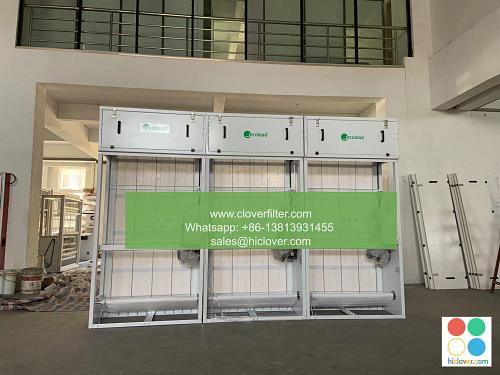3 Common Air Filter Misconceptions and How They Relate to Terms

As the world becomes increasingly aware of the importance of air quality control and pollution reduction, air filters have become a crucial component in maintaining a healthy and breathable indoor environment. However, despite their widespread use, there are several common misconceptions surrounding air filters that can lead to inadequate air filtration systems and compromised indoor air quality. In this article, we will explore three common air filter misconceptions and examine how they relate to key terms such as MERV ratings, HEPA filters, and activated carbon filters.
Misconception 1: All Air Filters are Created Equal
One of the most common misconceptions about air filters is that they are all created equal. However, this couldn’t be further from the truth. Air filters come in a variety of types and sizes, each with its own unique characteristics and application areas. For example, HEPA filters are designed to capture 99.97% of particles as small as 0.3 microns, making them ideal for clean rooms, hospitals, and other high-sensitivity environments. On the other hand, activated carbon filters are better suited for odor control and gas phase filtration, making them a popular choice for kitchen ventilation systems and industrial applications.
Misconception 2: Higher MERV Ratings Always Mean Better Performance
Another common misconception is that higher MEV ratings always translate to better performance. While it is true that higher MERV ratings indicate a filter’s ability to capture smaller particles, it is not always the case that higher ratings mean better performance. In fact, high-MERV filters can often restrict airflow and increase pressure drop, leading to reduced system performance and increased energy costs. As such, it is essential to consider the specific application requirements and system constraints when selecting an air filter, rather than simply opting for the highest MERV rating available.
Misconception 3: Air Filters Only Remove Particulates
A third common misconception is that air filters only remove particulates from the air. While it is true that particulate removal is a critical function of air filters, many modern filters are also designed to capture gases, odors, and volatile organic compounds (VOCs). For example, activated carbon filters can effectively remove odors and gases from the air, while UV-C filters can inactivate bacteria and viruses. As such, air filters play a critical role in maintaining not only indoor air quality but also occupant health and comfort.
In conclusion, air filters are a critical component in maintaining a healthy and breathable indoor environment. By understanding the common misconceptions surrounding air filters and air filtration systems, we can make informed decisions about the types of filters and system designs that best meet our specific application requirements. Whether you are designing a commercial HVAC system or simply looking to improve the air quality in your home, it is essential to consider the complex relationships between air filters, MEV ratings, and application areas to ensure optimal performance and indoor air quality. You haven’t asked a question or provided any context. What would you like to talk about? I can answer questions, provide information, or engage in conversation on a wide range of topics. Please feel free to ask me anything.

